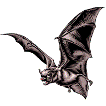Museum, University of Nebraska State

University of Nebraska State Museum: Mammalogy Papers
Document Type
Article
Date of this Version
4-1-2008
Citation
Published in Journal of Mammalogy, 89(2): 513–517, 2008.
Abstract
We tested the use of piezo-resistive force sensors to measure bite force in small mammals. These force sensors are thin (less than 1 mm) and can be used to measure forces up to 4,500 N. A battery-operated unit, ideal for field research, can be built easily and inexpensively. We tested this sensor in the laboratory and in the field on a variety of small mammals. Although our results indicate that the sensor is somewhat less accurate (coefficient of variation = 4%) than a conventional load cell, the small size and ease of use of the piezo-resistive detector is highly desirable. We also investigated the problem of performance and physiological condition of animals. We found the problem of lack of effort by test animals can enter a significant bias into estimates of maximal bite force.


Comments
Copyright © 2008, American Society of Mammalogists. Used by permission. http://www.mammalogy.org